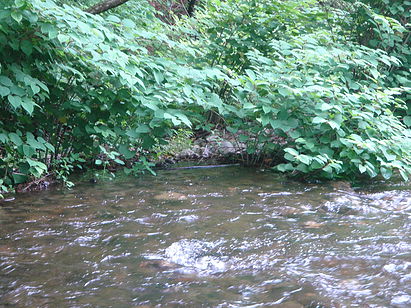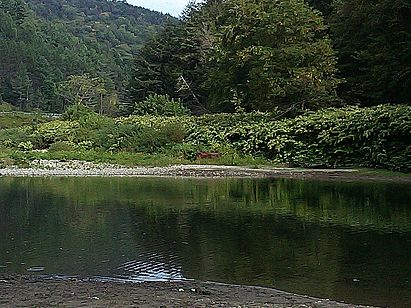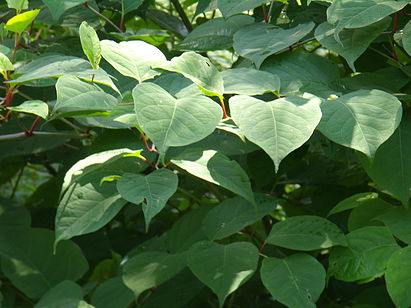Press Release/ Commentary for Immediate Release
Contact: Corrina Parnapy, District Manager
Winooski Natural Resources Conservation District
corrina@winooskinrcd.org
Invasive Japanese Knotweed 101
Japanese Knotweed (Fallopia japonica), which closely resembles giant knotweed and the hybrid Bohemidan knotweed, looks very similar to bamboo, although it is not related. Knotweed can be found along many roadways, stream corridors and along fields within the Winooski Watershed. Thanks to extensive erosion from Irene and other storms, Knotweed has spread far and wide throughout Vermont, impacting water quality and soil health.
This fast growing herbaceous perennial invasive originates from Asia. It was first introduced in the 1800’s as an ornamental species for gardens and has been used to control erosion (which it turns out actually contributes more to larger erosion events). Knotweed has been used in medicinal supplements and there is some research that honey bees are drawn to it. Young stems are edible and can be added to salads as well as knotweed can be made into a yummy jam. What makes this yummy, bee attracting ornamental a problem?
Knotweed greatly alters natural ecosystems. Once established populations are extremely persistent and can even survive severe flooding. They can grow along stream banks, block water flow, degrades trout spawning habitat, clog drainage ditches, break up pavement, form dense stands, prevents native growth, displaces wildlife and can create a fire hazard in winter. Knotweed and other invasive species can push out rare and other threatened species. Once established it alters the soil chemistry and nutrient cycle, prevents forest regeneration and stops natural succession by eliminating the understory plants. There is research that Knotweed will impact salmonid fisheries as well.
Japanese Knotweed is an upright shrub-like plant, has jointed, hollow stems with alternating leathery leaves that are ovate and broad. They have a cascade of white flowers that will blossom in August and September. Knotweed can grow to over 10 feet in height. Growth rates are generally 3 to 4 inches per day during the summer. It has red stems in winter that are very visible. Knotweed spreads by root expansion and seeds. A plant will have either male or female flowers. Male flowers are very rare in the United States, new plants form from rhizomes or cut stems. The plants will over winter as rhizomes, these thick rhizomes can extend horizontally through soils for more than 60 feet. Knotweed can tolerate heavy shade, high temperatures, drought, floods and soils that are high in salt. They can be found growing in wetlands, waste-ground, along roads, and along railroad tracks. Knotweed is often spread to new locations in contaminated fill.
Movement of contaminated soils spreads knotweed very easily. Methods of infestation include, excavation, landscaping, roadside ditch construction, dredging, removal of riparian buffers, and not properly disposing of yard clippings. While systematic herbicide can be effective it is dangerous to the surrounding plants and wildlife. The best control is to prevent it from becoming established, or by the systematic removal and incineration of plants. Control is a time-consuming, taking multiple years of treatment and management.
Spread prevention
- Landscape with native plants.
- Remove invasive plants from your property.
- Never compost terrestrial invasive plants.
- Avoid disturbing the land such as the removal of riparian or stream buffers.
- Know the source of your fill and mulch.
For more information on both terrestrial and aquatic Invasive Species within the Winooski Watershed and how you can stop the spread please visit: www.winooskinrcd.org
The Winooski Natural Resources Conservation District is one of 14 conservation districts throughout Vermont. It encompasses all of Chittenden and Washington County as well as parts of Orange County (Orange, Williamstown and Washington). The district relies on grants and individual donations to complete its conservation work. The WNRCD focuses its resources on completing conservation projects based in solid science to provide solutions to protect water quality and soil health within the areas of agricultural assistance, forestland enhancement, urban conservation and watershed stewardship.
# # #









